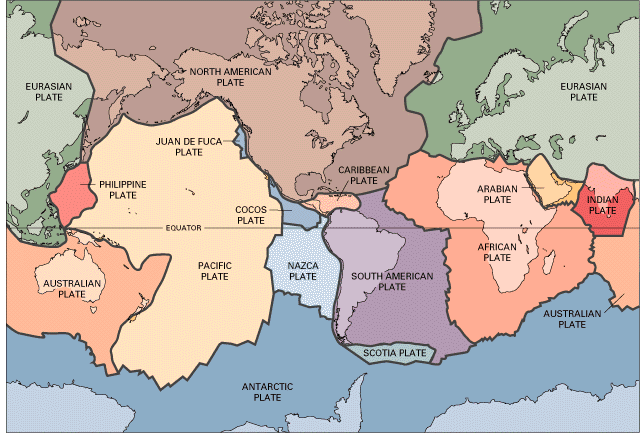|
Earth's Tectonic Plates
 | | Sixteen rigid fragments of the Earth's crust move in relation to one another. Figure source: http://pubs.usgs.gov/publications/text/slabs.html |
The lithosphere is broken up into about 2 dozen or so plates, which move with respect to one and other. A tectonic plate (also called a lithospheric plate) is a massive, irregularly shaped slab of solid rock which move as cohesive, rigid bodies on the earth's surface. Tectonic plates have a large range of sizes and thicknesses. The Pacific Plate is among the largest, while the disappearing Juan De Fuca Plate is one of the smallest. Oceanic crust is much thinner than continental crust, 5 kilometers verses 100 kilometers, relatively. Oceanic crust is composed of dense, heavy basaltic rocks. In contrast, the continental crust is composed of granitic rocks, which contain relatively lightweight minerals such as quartz and feldspar. Due to the difference in density of oceanic plates in comparison to continental plates, when they collide the heavier oceanic plate will subduct beneath the lighter continental plate.
|







